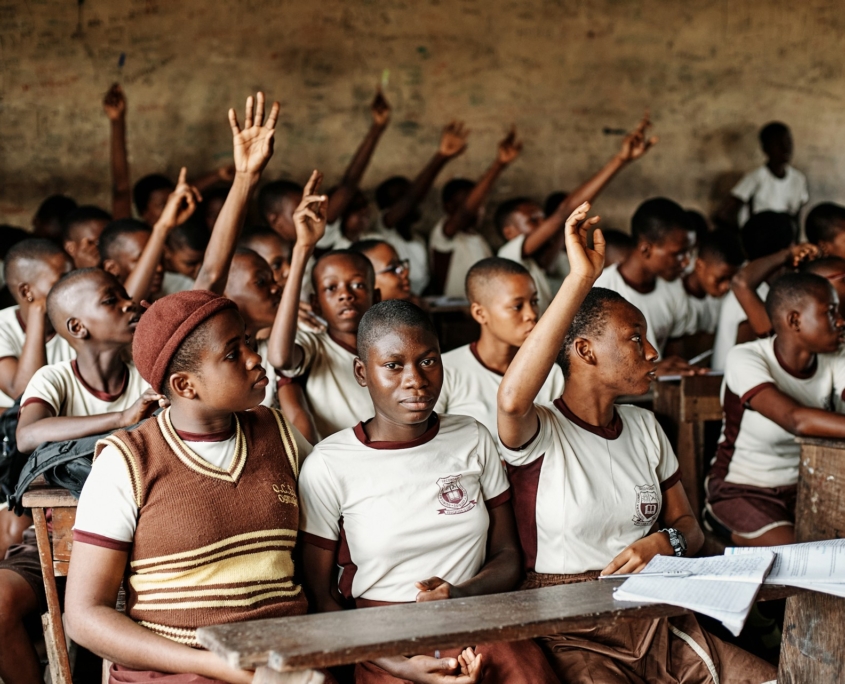Transforming Lives: Education breaks the cycle of poverty
 Poverty remains one of the most pressing issues worldwide, particularly in developing countries. Among various strategies to combat poverty, education is a powerful tool capable of transforming lives and driving sustainable development. Successful educational programs and policies in developing countries prove the pertinence of this model. Education breaks the cycle of poverty and creates opportunities for economic and social advancement.
Poverty remains one of the most pressing issues worldwide, particularly in developing countries. Among various strategies to combat poverty, education is a powerful tool capable of transforming lives and driving sustainable development. Successful educational programs and policies in developing countries prove the pertinence of this model. Education breaks the cycle of poverty and creates opportunities for economic and social advancement.
Breaking the Cycle of Poverty Through Education
The Galor-Zeira model, developed by economists Oded Galor and Joseph Zeira, explores the link between income distribution and investment in human capital. According to this model, income disparity widens in economies where access to education is limited, leading to persistent poverty. In contrast, broad access to education empowers individuals and communities by providing the knowledge and skills necessary to participate effectively in the labor market and improve their economic prospects. It provides long-term benefits such as higher earning potential and social mobility, pulling individuals out of the intergenerational cycle of poverty.
Successful Educational Programs and Policies
- Bangladesh’s BRAC Schools. BRAC is an international development organization founded in Bangladesh that focuses on providing quality education to children in marginalized and underserved communities, among other initiatives driven by poverty alleviation and human rights. It has implemented innovative educational initiatives, including social enterprise schools that focus on play-based learning, with higher qualified teachers, digital content and advanced facilities. BRAC’s schools have significantly improved literacy and pass rates while also creating economic opportunities for its students, empowering people to rise above poverty.
- Ghana’s Free Senior High School Policy. In line with Goal 4 of the United Nations (U.N.) Sustainable Development Goals, Ghana implemented the Free Senior High School Policy in 2017. The aim of the policy isto provide free secondary education to all students. This policy increased enrollment rates by 11% by reducing the financial burden on families, representing a significant step toward inclusive education.
- India’s Mid-Day Meal Scheme. With the Mid-Day Meal Scheme, a free school lunch is provided to children in public schools to address malnutrition. Furthermore, the free meal encourages school attendance and enrollment. Although the program experienced issues with implementation feasibility and financial constraints, the scheme has had a positive impact on educational outcomes and the well-being of children by helping improve the children’s learning abilities, increasing enrollment, reducing dropout rates and overall, increasing social equality.
- Kenya’s Bridge International Academies. Bridge International Academies Foundation provides low-cost, high-quality education, aiming to ensure that children from underserved communities achieve academic excellence. By putting students at the center of its model, Bridge has improved educational access for children from low-income families.
- Peru’s Enseña Peru. Enseña Peru recruits professionals, principals and teachers to teach in under-resourced schools, aiming to improve the quality of education. Studies found that the intervention had positive and statistically significant average effects on educational outcomes in Peru.
- Uganda’s Universal Primary Education (UPE). Uganda launched UPE in 1997 to ensure free primary education to all children in the country. Since then, it has implemented various policies focused on educational quality and access, including investments in education infrastructure, teacher training and curriculum development. Although challenges such as overcrowding in classrooms and inadequate funding remain, the policy has significantly improved educational quality and access while also contributing to increased gender equality and inclusive education.
- Brazil’s Bolsa Família. Bolsa Família integrates education and socio-economic welfare by providing financial assistance to low-income families. Assistance is provided based on a condition of school attendance and regular health checks. It promotes a holistic approach to poverty alleviation by strengthening families’ access to basic rights and ensuring social transformation. In this way, Bolsa Família reduces both current and future poverty by breaking the cycle of poverty. The virtue of the Bolsa Família is that it reaches a significant portion of Brazilian society that has never benefited from social programs. Furthermore, it demonstrates the benefits of combining social policies with education.
- Vietnam’s GPE Vietnam Escuela Nueva (VNEN). VNEN, adopted by Colombia, aims to build a new school model by focusing on innovative teaching methods, student-centered learning and reforming curriculum. Promising results of encouraging small group learning, problem-solving, more learning opportunities and frequent information sharing among teachers have been the development of creativity, self-esteem, responsibility as well as social and communication skills among students.
Future Directions and Implications
Education holds the transformative power to alleviate poverty and drive sustainable development by empowering individuals to achieve their full potential. Examples from developing countries demonstrate that successful educational programs and policies could create lasting positive impacts on communities. The Galor-Zeira model underscores the importance of investing in human capital for economic growth and reducing income disparity.
These educational programs and policies can potentially help break the cycle of poverty. They enable individuals to invest in their future without incurring debt. By ensuring that education is accessible and affordable, these ongoing initiatives aim to create opportunities for economic mobility. They empower individuals to contribute to their communities and economies.
– Ilgın Özkul
Ilgın is based in London, UK and focuses on Good News for The Borgen Project.
Photo: Unsplash
